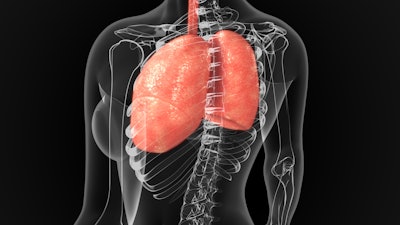
It is widely known that people who have impaired lung function are at risk of health concerns beyond the pulmonary realm. For this reason, a group of researchers proposed a new concept at the European Respiratory Society (ERS) Congress 2025 in Amsterdam.
Peter Burney, MD, suggested a new classification category of chronic lung disease called “small lung syndrome.” The class would consist of individuals who don’t have pulmonary obstruction, like in COPD, but do have habitually low lung volume and are susceptible to comorbidities such as hypertension, atherosclerosis and diabetes.
The expert team recommended multiple action items surrounding the concept:
- Create a unique International Classification of Diseases (ICD) code.
- Develop public health initiatives to improve maternal health and childhood nutrition in impoverished communities and reduce pollution.
- Utilize lung function tools to diagnose and track individuals at high risk of comorbidities.
- Examine alternative interventions like triple therapy in pre-COPD clinical trials.
- Incorporate low forced vital capacity (FVC) into risk assessments for cardiovascular disease.
By recognizing this variation of pulmonary disease and establishing a separate ICD code, patients can receive a more accurate diagnosis and scientists can improve epidemiologic tracking, said Dr. Burney, who is emeritus professor of respiratory epidemiology at Imperial College London.
Shyamali Dharmage, PhD, referenced the Tasmanian Longitudinal Health Study, which affirms that people who have low lung function in childhood are at greater risk of deterioration as adults. Early diagnosis allows for interventional therapy to reduce this risk.
“We need to take early action to reduce long-term diseases — so small lungs … and even [declining lung function] can lead to multimorbidity, and especially restrictive deficits can lead to cardiometabolic diseases,” said Dr. Dharmage in an article by The American Journal of Managed Care. “Therefore, we need to detect these conditions early and do something about it to help these people who are deviating from the normal lung function pathways.”
Dr. Dharmage, who is professor of epidemiology at the University of Melbourne in Australia, stressed the importance of regularly monitoring lung function and presented the Lung Function Tracker — a free tool endorsed by the ERS. This approach, she said, creates a significant opportunity to prevent future development of respiratory and cardiometabolic conditions.
Obianuju Beatrice Ozoh, MD, contributed a global perspective to Dr. Burney’s concept. She said people in low- and middle-income countries have an overwhelmingly high risk of restrictive lung impairment. For example, more than 70% of Nigerians aged 40 and older have underdeveloped lungs due to factors such as maternal malnutrition and low birth weight as well as increased exposure to biomass fuel and illnesses like HIV.
“Improving socioeconomic status and eradicating poverty is fundamental to improving lung health and overall cardiovascular health as well, but we can’t do this if we don’t have access to diagnostics to even measure lung function,” said Dr. Ozoh, who is associate professor at the University of Lagos in Nigeria and vice president of the Pan African Thoracic Society.
Another presenter in the group, Christer Janson, MD, from Uppsala University in Sweden, suggested that lung capacity measurements be included in risk calculations of cardiovascular disease and diabetes. He said FVC is an accurate predictor of these conditions and could be leveraged in bidirectional screening to improve outcomes.























